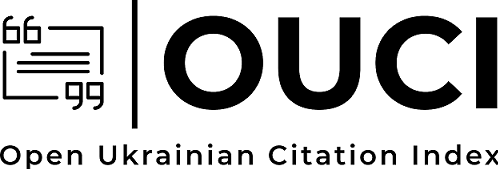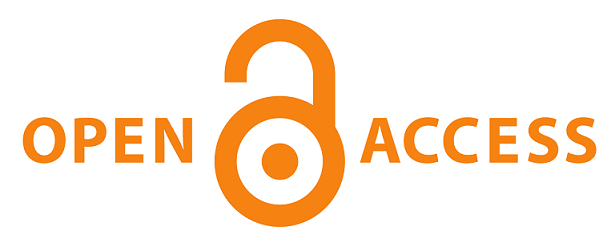SIGNIFICANT STEP IN THE FORMATION OF THE PRO-TURKISH POLICY OF HETMAN PETRO DOROSHENKO
DOI:
https://doi.org/10.28925/2524-0757.2018.2.4246Keywords:
political consciousness, state, Ukraine, Hetman, TurkeyAbstract
It is outlined in the article the level of political consciousness of the Cossack officers of the Zaporozhian Army in the second half of the 17 century. Summer 1665 Petro Doroshenko, experienced Cossak leader, became Hetman of Right-Bank Ukraine. He made great efforts to unite all ethnic Ukrainian lands into the one state. Hetman sought at the same time to find an understanding with both the Tsar of Moscow and the King of Rzecz Pospolita. However, their efforts for retaining the lands of the Zaporozhian Army, influenced on to the Doroshenko foreign policy vector. With the signing Andrusovo Truce between Moscovia and Rzecz Pospolita (Polish-Lithuanian Commonwealth) in January 1667, Hetman hopes to unite under his power both banks of the Dnieper became problematic. That’s why, he decided to cooperate with Ottoman Porte. Sultan Mehmed IV responded positively to the request of the Ukrainian hetman. The ongoing diplomatic contacts was culminated by the decision of Chyhyryn Cossack Council on 10 August 1668, of the begging of legal official relations. The project of Ukrainian-Turkish agreement clearly demonstrated the domination of the idea of own state under the rule of the Ottoman Porte in the political consciousness of the right-bank officers. First of all, it was stated that the new agreement had to continue the tradition launched by Bohdan Khmelnytskyi in its orientation to the Ottoman Empire. It contained a significant note, that Turkish troops, during hostilities in Ukraine, were unconditionally subordinated to Zaporozhian Army Hetman. Suzerain was forbidden to interfere in domestic Ukrainian affairs, in particular in a time Hetman elections. The Union should have been “a true friendship and consent”, on the sample treaty between Turkey and the Crimean Khanate. It was clearly defined boundaries of Ukrainian state and conditioned by the question under what circumstances Zaporizhzhya Army could go to break the treaty.
Downloads
References
Akty, otnosiashchiesia k istorii Yuzhnoi i Zapadnoi Rossiii. (1869). St. Petersburg, Vol. VI, (1665–1668), 280 [in Russian].
Akty, otnosiashchiesia k istorii Yuzhnoi i Zapadnoi Rossiii. (1872). St. Petersburg, Vol. VI, (1657–1663, 1668–1669), 398 [in Russian].
Akty, otnosiashchiesia k istorii Yuzhnoi i Zapadnoi Rossiii. (1873). St. Petersburg, Vol. VI, (1648–1657, 1668–1669), 404[in Russian].
Doroshenko, D. (1985). Hetman Petro Doroshenko. Overview ac publicae vitae suae actiones, New York [in English].
Bantish-Kamensky, D. N. (Ed.) (1858). Fontes malorossyyskoy historiae, sobrannie, et yzdannie A. Bodyanskym. M., Pars I [in Russian].
Kostomarov, N. I. (1905). Sobranie sochinenii. Historia investigationis et Monograph,Vol XV, Ruina, VI, 814. St. Petersburg [in Russian].
Krykun, M. (1999). Korsunska kozatska rada 1669 roku. Lviv, Zapysky Naukovoho tovarystva imeni Shevchenka, 238, 117–148 [in Ukrainian].
Smolii, V., Stepankov, V. (2011). Petro Doroshenko. Politychnyi portret. K.: Tempora [in Ukrainian].
Tysiacha rokiv ukrainskoi suspilno-politychnoi dumky. (2001). Kyiv, V. 9, T. 3, Kn. 1, 502 p. [in Ukrainian].
Chukhlib, T. (2003). Getmany i monarkhy. Ukrainska derzhava v mizhnarodnykh vidnosynakh 1648– 1714 rr. Kyiv-Niu-York [in Ukrainian].
Fedoruk ,Ya. (2007). Problema turetskoho protektoratu Bohdana Khmelnytskoho u 1655 r. Terra cossacorum: Studiyi z davnioi i novoi istorii Ukrainy, 155–186 [in Ukrainian].
Catalog dokumentów tureckich. (1959). T. I. Dokumenty do dziejów Polski I krajów ościennych w latach 1455–1672. Warszawa [in Polish].
Zbior pamiętników dziejów polskich. (1859). T. 4, Warszawa [in Polish].
Published
How to Cite
Issue
Section
License
Copyright (c) 2019 Kyiv Historical Studies

This work is licensed under a Creative Commons Attribution-NonCommercial-ShareAlike 4.0 International License.
Authors who publish in this journal retain the right of authorship of the work and give to the journal right of first publication of this work under the conditions of Creative Commons: Attribution-NonCommercial-ShareAlike 4.0 International (CC BY-NC-SA 4.0), which allows others freely distribute the work published with reference to the authors of the original work and the first publication of this magazine.














